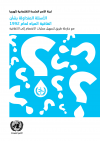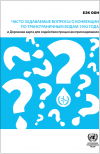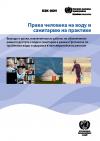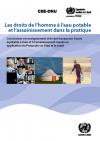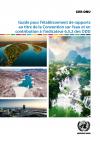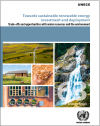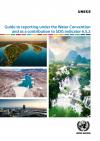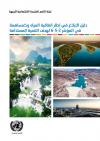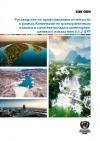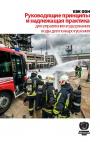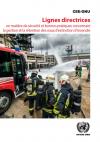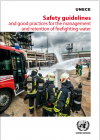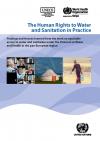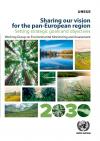Publications
Displaying Results 61 - 80 of 561
- العربية
تم اعتماد اتفاقية حماية واستخدام المجاري المائية والبحيرات الدولية )اتفاقية المياه( عام
1992 ، ودخلت هذه الاتفاقية حيّز النفاذ عام 1996 . وقد عُدِّلت اتفاقية المياه، التي صُمِّمت في
الأساس كأداة إقليمية، عام 2003 للسماح بانضمام بلدان من خارج منطقة لجنة الأمم المتحدة
الاقتصادية لأوروبا. واعتباراً من عام 2016 ، أصبح باستطاعة جميع الدول الأعضاء في الأمم
المتحدة الانضمام إلى اتفاقية المياه. وبحلول
- Pусский
Конвенция по охране и использованию трансграничных водотоков и международных озер (Конвенция по трансграничным водам) была принята в 1992 году и вступила в силу в 1996 году. В 2003 году в Конвенцию по трансграничным водам, изначально разработанную в качестве регионального документа, были внесены поправки, с тем чтобы дать возможность странам, не входящим в регион ЕЭК ООН, присоединяться к
- Français
La Convention sur la protection et l’utilisation des cours d’eau transfrontières et des lacs internationaux (Convention sur l’eau) a été adoptée en 1992, et est entrée en vigueur en 1996. Conçue comme un instrument régional, la Convention sur l’eau a été modifiée en 2003 pour permettre l’adhésion des pays hors de la région de la CEE-ONU. Depuis 2016, tous les États membres de l’ONU peuvent
- English
This report highlights the main results of an assessment of the water-food-energy-ecosystems nexus in the North-Western Sahara Aquifer System (NWSAS), shared by Algeria, Libya and Tunisia. The aquifer system is one of the largest transboundary groundwater reserves of North Africa, extending over one million square kilometers and subject to increased water demands. Improving the management of the
- English
This policy brief highlights the main results of an assessment of the water-food-energy-ecosystems nexus in the North-Western Sahara Aquifer System (NWSAS), shared by Algeria, Libya and Tunisia. The aquifer system is one of the largest transboundary groundwater reserves of North Africa, extending over one million square kilometres and subject to increased water demands. Improving the
- Pусский
Протокол по проблемам воды и здоровья является юридически обязательным документом, направленным на обеспечение адекватного снабжения безопасной питьевой водой и санитарией для всех, а также эффективной охраны водных ресурсов в панъевропейском регионе. При реализации этих целей особое внимание уделяется обеспечению равного доступа к услугам водоснабжения и санитарии «всем членам общества, особенно
- Français
Le Protocole sur l’eau et la santé est un instrument juridiquement contraignant qui a pour objet d’assurer à tous un approvisionnement suffisant en eau potable salubre et en assainissement, et, de protéger efficacement les ressources en eau dans la région pan-européenne. Dans la poursuite de ces objectifs, il accorde une attention particulière à garantir un accès équitable aux services d’eau et d
- Français
L’introduction d’un mécanisme de suivi par le biais d’établissement de rapports au titre de la Convention sur l’eau et dans le cadre de l’adoption du cadre des ODD (indicateur 6.5.2 des ODD) marque une étape importante dans le soutien à la coopération transfrontière sur l’eau. Le présent Guide pour l’établissement de rapports au titre de la Convention sur l’eau et en contribution à l’indicateur 6
- English
There is an increasing recognition that energy-related objectives can be achieved more effectively through integrated and consultative planning, in synergy with environmental and other sectoral objectives, notably those of the water and agricultural sectors. A series of intersectoral “nexus” assessments under the Convention on the Protection and Use of
- English
The introduction of a reporting monitoring mechanism under the Water Convention and the adoption of the SDG framework (SDG indicator 6.5.2) mark an important step in supporting transboundary water cooperation. This Guide to reporting under the Water Convention and as a contribution to SDG indicator 6.5.2 was developed as a result of a review of the first reporting on SDG indicator 6.5.2 and under
- العربية
The introduction of a reporting monitoring mechanism under the Water Convention and the adoption of the SDG framework (SDG indicator 6.5.2) mark an important step in supporting transboundary water cooperation. This Guide to reporting under the Water Convention and as a contribution to SDG indicator 6.5.2 was developed as a result of a review of the first reporting on SDG indicator 6.5.2 and under
- Pусский
The introduction of a reporting monitoring mechanism under the Water Convention and the adoption of the SDG framework (SDG indicator 6.5.2) mark an important step in supporting transboundary water cooperation. This Guide to reporting under the Water Convention and as a contribution to SDG indicator 6.5.2 was developed as a result of a review of the first reporting on SDG indicator 6.5.2 and under
- Pусский
These safety guidelines and good practices have been developed to support governments, competent authorities and operators in minimizing the risk of fire and safely retaining firefighting water. They are intended to enhance existing practices and promote harmonized safety standards for firefighting water management and retention, in order to prevent accidental pollution of soil and water,
- Français
These safety guidelines and good practices have been developed to support governments, competent authorities and operators in minimizing the risk of fire and safely retaining firefighting water. They are intended to enhance existing practices and promote harmonized safety standards for firefighting water management and retention, in order to prevent accidental pollution of soil and water,
- English
These safety guidelines and good practices have been developed to support governments, competent authorities and operators in minimizing the risk of fire and safely retaining firefighting water. They are intended to enhance existing practices and promote harmonized safety standards for firefighting water management and retention, in order to prevent accidental pollution of soil and water,
- English
The Protocol on Water and Health aims at achieving an adequate supply of safe drinking water and sanitation for everyone and effectively protecting water resources in the pan-European region. In pursuing such aims, it gives special consideration to ensure equitable access to water and sanitation services “for all members of the population, especially those who suffer a disadvantage or social
- English
The UNECE Working Group on Environmental Monitoring and Assessment has been engaged in efforts to make environmental monitoring an effective instrument in policymaking and, in particular, to assist countries of Eastern and South-Eastern Europe, the Caucasus and Central Asia. UNECE member States, with the support of the secretariat, have made significant progress in establishing the Shared
- Pусский
The Joint Expert Group was established in 1998 to work on issues related to the prevention of accidental water pollution, in the context of the Convention on the Protection and Use of Transboundary Watercourses and International Lakes (Water Convention) and the Convention on the Transboundary Effects of Industrial Accidents (Industrial Accidents Convention), both serviced by UNECE. These
- Français
The Joint Expert Group was established in 1998 to work on issues related to the prevention of accidental water pollution, in the context of the Convention on the Protection and Use of Transboundary Watercourses and International Lakes (Water Convention) and the Convention on the Transboundary Effects of Industrial Accidents (Industrial Accidents Convention), both serviced by UNECE. These
- English
The Joint Expert Group was established in 1998 to work on issues related to the prevention of accidental water pollution, in the context of the Convention on the Protection and Use of Transboundary Watercourses and International Lakes (Water Convention) and the Convention on the Transboundary Effects of Industrial Accidents (Industrial Accidents Convention), both serviced by UNECE. These


